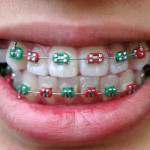
Orthodontic mini-screw implants have become a popular method of providing anchorage reinforcement during orthodontic treatment. The aim of this review was to assess the failure rates for mini-screw implants used for orthodontic anchorage purposes and to identify any significant risk factors possibly affecting these failure rates.
A wide range of databases (19 in all) were searched including, Medline, Embase, LILACS, Cochrane Library, Google Scholar, Web of Science, African Journals Online, Digital Dissertations. Randomized controlled trials (RCTs), prospective controlled clinical trials, and prospective cohort studies investigating the success and survival of mini-screw implants used for orthodontic anchorage reinforcement in patients of any age and sex were included Studies on mini-implants (implants with a diameter greater than 2 mm) and mini-plates were excluded. Two authors screened papers and extracted data. Bias in RCTs was assessed using the Cochrane risk of bias tool with non-randomised studies being assessed using the Newcastle-Ottawa Scale. Failure event rates, relative risks, and the corresponding 95% confidence intervals were calculated. The random-effects model was used to assess each factor’s impact. Subgroup and meta-regression analyses were also undertaken.
- 52 studies were included 5 RCTs, 8 prospective controlled clinical trials, 27 prospective cohort studies, and 12 studies with unclear designs that were assessed to be prospective cohort studies. The majority (73%) of studies were undertaken in a university setting.
- A funnel plot hinted that there might be publication bias.
- Meta-analysis found an overall failure rate of 13.5% (95% CI, 11.5-15.8)
- Failures of mini-screw implants were not associated with patient sex or age and mini-screw implant insertion side, whereas they were significantly associated with jaw of insertion.
- Failures in the mandible were 1.5 times more than those of the maxilla (relative risk =1.56; 95% CI, 1.13-2.15; P=0.007)
- Certain trends were identified through exploratory analysis; however, because of the small number of original studies, no definite conclusions could be drawn.
The authors concluded
Orthodontic mini-screw implants have a modest small mean failure rate, indicating their usefulness in clinical practice. Although many factors seem to affect their failure rates, the majority of them still need additional evidence to support any possible associations.
Comment
The authors assessed publication bias and calculated that adjusting for this meant that the estimated failure rate would increase to 15.6% (95% CI, 13.3-18.1).
Links
Papageorgiou SN, Zogakis IP, Papadopoulos MA. Failure rates and associated risk factors of orthodontic miniscrew implants: A meta-analysis. Am J Orthod Dentofacial Orthop. 2012 Nov;142(5):577-595.e7. doi: 10.1016/j.ajodo.2012.05.016. PubMed PMID: 23116500

[…] Review suggests a modest failure rate for orthodontic mini-screws used for anchorage reinforcement […]